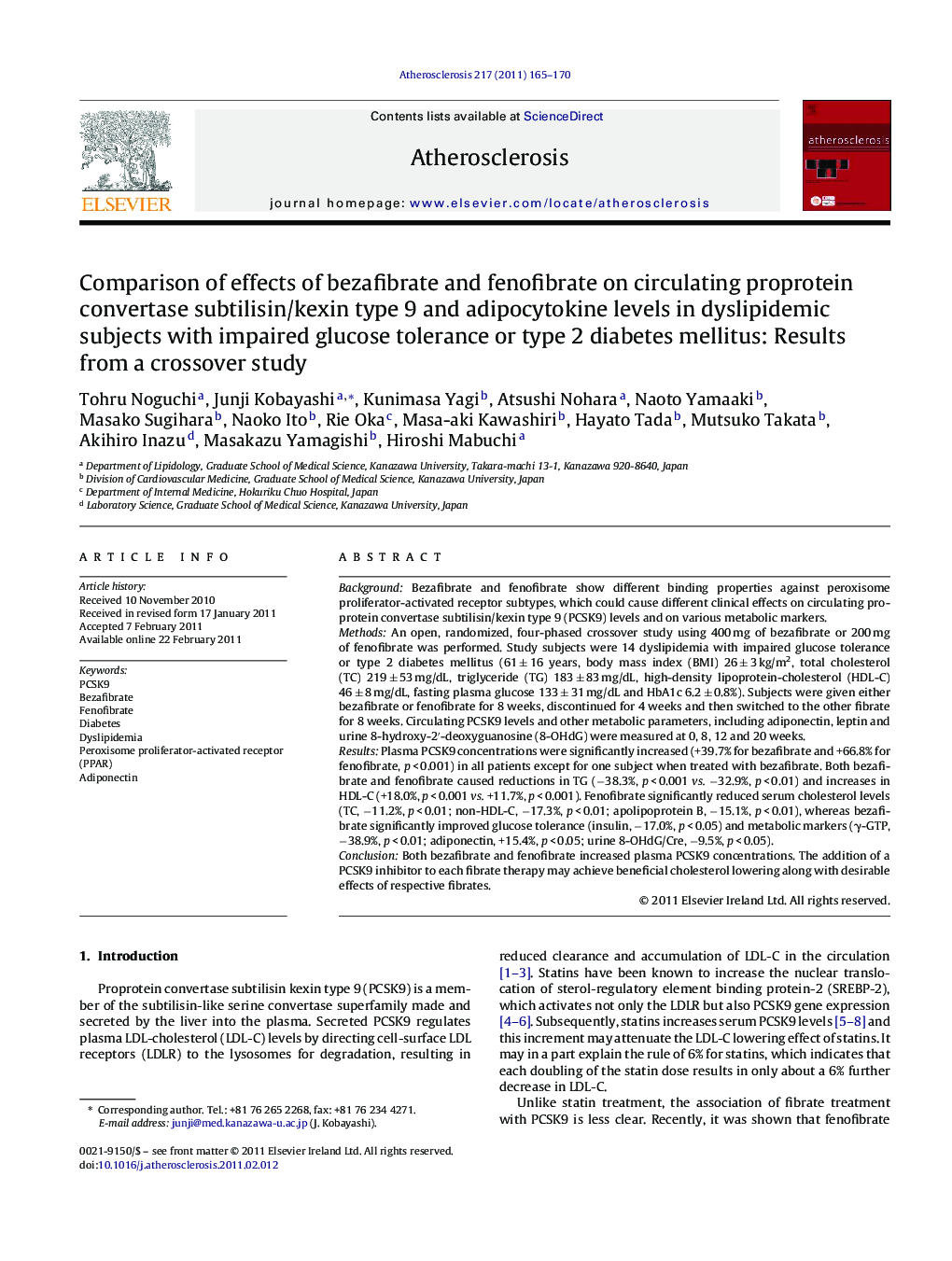| کد مقاله | کد نشریه | سال انتشار | مقاله انگلیسی | نسخه تمام متن |
|---|---|---|---|---|
| 5949595 | 1172389 | 2011 | 6 صفحه PDF | دانلود رایگان |

BackgroundBezafibrate and fenofibrate show different binding properties against peroxisome proliferator-activated receptor subtypes, which could cause different clinical effects on circulating proprotein convertase subtilisin/kexin type 9 (PCSK9) levels and on various metabolic markers.MethodsAn open, randomized, four-phased crossover study using 400 mg of bezafibrate or 200 mg of fenofibrate was performed. Study subjects were 14 dyslipidemia with impaired glucose tolerance or type 2 diabetes mellitus (61 ± 16 years, body mass index (BMI) 26 ± 3 kg/m2, total cholesterol (TC) 219 ± 53 mg/dL, triglyceride (TG) 183 ± 83 mg/dL, high-density lipoprotein-cholesterol (HDL-C) 46 ± 8 mg/dL, fasting plasma glucose 133 ± 31 mg/dL and HbA1c 6.2 ± 0.8%). Subjects were given either bezafibrate or fenofibrate for 8 weeks, discontinued for 4 weeks and then switched to the other fibrate for 8 weeks. Circulating PCSK9 levels and other metabolic parameters, including adiponectin, leptin and urine 8-hydroxy-2â²-deoxyguanosine (8-OHdG) were measured at 0, 8, 12 and 20 weeks.ResultsPlasma PCSK9 concentrations were significantly increased (+39.7% for bezafibrate and +66.8% for fenofibrate, p < 0.001) in all patients except for one subject when treated with bezafibrate. Both bezafibrate and fenofibrate caused reductions in TG (â38.3%, p < 0.001 vs. â32.9%, p < 0.01) and increases in HDL-C (+18.0%, p < 0.001 vs. +11.7%, p < 0.001). Fenofibrate significantly reduced serum cholesterol levels (TC, â11.2%, p < 0.01; non-HDL-C, â17.3%, p < 0.01; apolipoprotein B, â15.1%, p < 0.01), whereas bezafibrate significantly improved glucose tolerance (insulin, â17.0%, p < 0.05) and metabolic markers (γ-GTP, â38.9%, p < 0.01; adiponectin, +15.4%, p < 0.05; urine 8-OHdG/Cre, â9.5%, p < 0.05).ConclusionBoth bezafibrate and fenofibrate increased plasma PCSK9 concentrations. The addition of a PCSK9 inhibitor to each fibrate therapy may achieve beneficial cholesterol lowering along with desirable effects of respective fibrates.
Journal: Atherosclerosis - Volume 217, Issue 1, July 2011, Pages 165-170